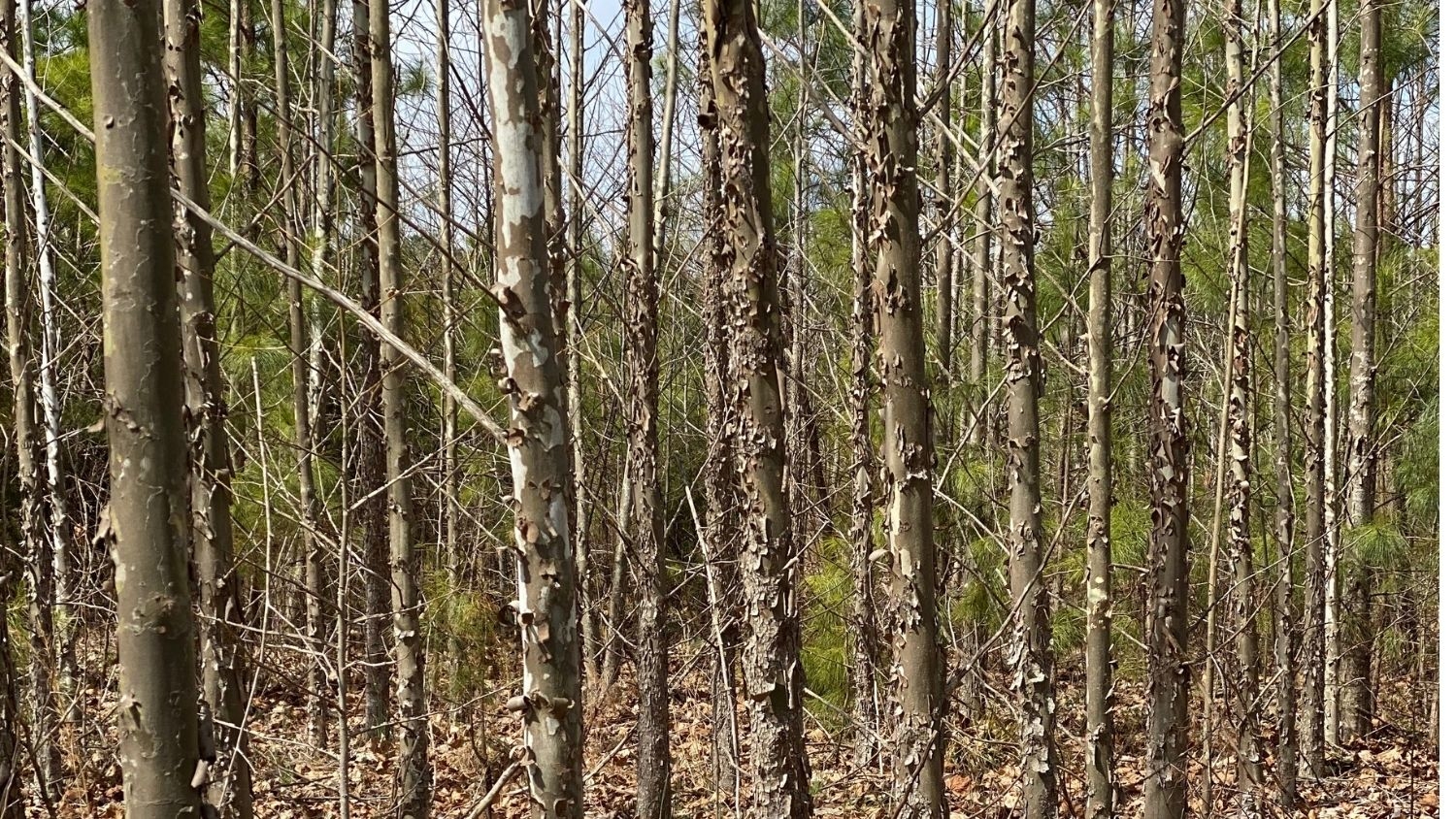Could Sycamore Trees Be an Alternative Fuel Source?

A new study by NC State researchers found a native tree, the American sycamore, could be a promising candidate as a potential fuel source.
In the journal Biomass and Bioenergy, the researchers reported their findings from growing sycamore trees on a degraded agricultural landscape with relatively little tillage, fertilizers or herbicides. Those factors could contribute to their economic and environmental viability as a fuel source, researchers said. They envision sycamore trees as a product farmers could plant on degraded land both as a source of fuel and to improve the soil.
The Abstract spoke about the study with the study’s lead author, Omoyemeh Ile, graduate student at NC State, and co-author John King, professor of forestry and environmental resources at NC State.
TA: What did you find from your study of growing sycamore trees?
Ile: We didn’t set out to study just sycamore. In the beginning, we also planted sweetgum, tulip tree and a poplar hybrid species. But sycamore was the only tree species that survived. There was a drought that followed a cold, wet season, and the other tree species didn’t do well.
In addition to their ability to endure stress, we also found we could grow sycamore using minimal inputs, meaning we used very little herbicides and we didn’t use any fertilizers. Despite this, the trees grew quickly. The productivity was comparable to other known woody fuel sources in the southeastern U.S.
Also, the site where we grew the trees is a degraded agricultural land that is water-logged. We think this means farmers could grow on water-logged, unproductive agricultural lands. We also saw additional benefits, in that the sycamore trees outgrew the weeds and helped suppress them.
TA: What did you learn about the productivity of sycamore?
Ile: We estimated the productivity of the trees by measuring the trees’ mass – first by measuring the trees’ height and the diameter of the trunks. Then we separated the stems, live branches and dead branches to get dry weight values. We used all these to develop biomass equations and apply them to the tree diameters to estimate biomass of each plot.
We found sycamore trees had more productivity when we planted them in a density of 5,000 to 10,000 trees per hectare compared to 2,500 or 1,250 trees per hectare. We think going with 5,000 trees per hectare would be a better option for farmers because we didn’t see any significant difference in the productivity between those two planting densities.
TA: What is your vision for how sycamore could be grown as a crop?
Ile: The ultimate goal is to encourage the widespread adoption of bioenergy-food production systems. If you have a farmer who is struggling with an unproductive farmland or has land that is water-logged, we could tell them, “you could try to keep this land in regenerative agriculture.” That means using the sycamore trees to improve the land’s soil by boosting its organic carbon, soil water retention, and other features. These are some of the things we are working on right now.
TA: Why have sycamores been overlooked in the past?
King: In the past, sycamore has been investigated for timber production by the forest products industry. What they found out in industry studies was that when the sycamore would get to be 12 or 15 years old, they would get bacterial or fungal diseases, and in some cases, a blight could kill the entire plantation.
We have several sites of sycamore in eastern and central North Carolina – one of them is in its 12th year – and we have not had any disease problems. We cut them when they reach three to four years of age, and that keeps it in a juvenile state, which we think may make them less susceptible to the diseases. So far, the evidence bears that out.
TA: How does burning biomass compare to other energy sources in terms of its carbon footprint?
King: There are academics who argue against bioenergy, and especially wood as an energy source, because they feel that it has a net global warming forcing potential. And that’s largely because of a disturbance effect on forests.
The other part is people think that if you start taking everything off the landscape to the lumber mill, and the branches and everything else to the bioenergy plant, then that may be a net nutrient drain on the forest.
My perspective is – we are looking for opportunities to integrate wood energy feedstock production into existing land-use systems. We don’t want to create new demand on forest carbon and nutrient cycles. Rather, we want to integrate wood energy crops into the agricultural production system, just like corn, soybean, and other crops. The benefit of doing that is you’re not creating any new demands on natural or managed forests, and you actually have the potential to improve the carbon footprint of agriculture, the health of agricultural soils, by capturing and storing atmospheric carbon, and also the biodiversity profile of the agricultural landscape, while diversifying rural economies and U.S. domestic energy production.
- Categories: